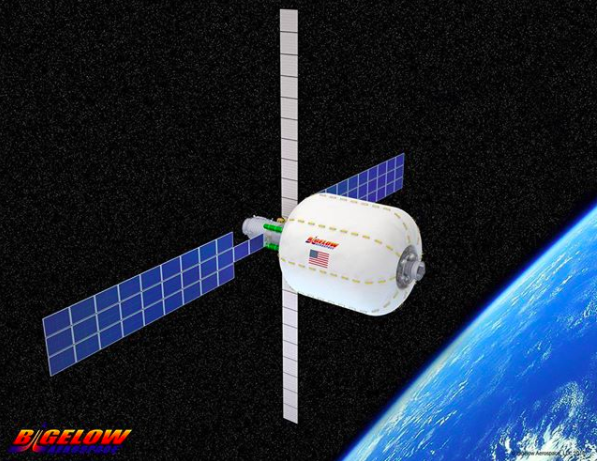In the SSI Yahoo Group High Frontier simulation/game creator and SSI Senior Associate Joe Strout just posted this fascinating idea for a different approach to the SSI G-Lab. It uses a free-flying Bigelow B330 for savings on the outer craft and a different sort of centrifuge system.
“I’ve been thinking for a while how to scale down the G-Lab concept into its
It’s basically a (custom-built) model train, running around the wall of a BA-330 module. Picture something like a G-scale (garden scale) train or slightly larger; each car is about 30cm long, and both track and cars are curved slightly to match the curvature of the wall (er, floor). It’s a *long* train, going all the way around the 19.6 m track; if the cars are about 30 cm long, then there are 65 of them including the engine(s).
The cars themselves are basically flatbeds, with a large indentation in which a mouse cage can rest (with weak magnets to hold it in place under microgravity).
The engine and the cars both pick up power from the track; the cars also pass
In its simplest implementation, that’s pretty much it.
However, that might be more downtime than we want (it could take hours to work through all those cages).
This would be under computer control, so the researcher would tell the computer, “pick up cage 17,” and it would spin up the crane to match the track speed, position the crane head over cage 17, and lower the claw/electromagnet. Having grabbed the cage, it would then reel it in, and then slow to a stop next to the researcher, who would measure the mice, clean/replace the cage, etc. When done, the researcher attaches the cage back to the crane, says “place on car 17,” and the crane reverses the process, matching speed/position and then lowering the cage into position.
All this seems very cheap and low-risk to me; decades of model trains have amply demonstrated most of the technology involved. It also doesn’t take too much room on the station, block the researcher’s passage from one end of the station to the other, etc. The whole thing comes as a kit, assembled by the researchers the first day, and put through its paces before they put the mice inside. When our BA-330 lease is up, the researchers simply take it back apart and pack it back into the boxes it came in.
We might even be able to get a company like Lionel to produce any custom track
What do you all think?
Best,
– Joe”
Thanks Joe, it is an intriguing idea!
For more on the reasons a G-Lab is so very important, just check the recent news stories on the effects of microgravity on the Kelly Twin experiment and look to this page on SSI.org.


